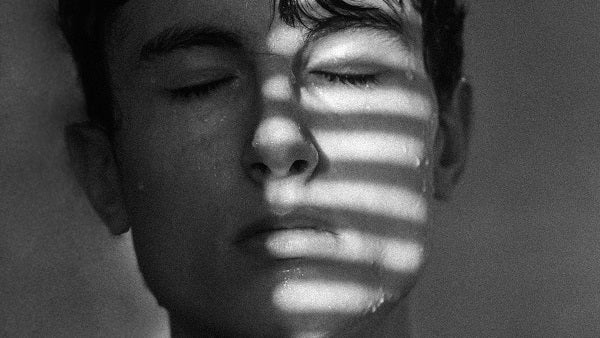
Washing the face is the foundation of glowing skin. Using a mild cleanser regularly can cure most skin problems and aid active ingredient penetration into the skin. This article will help you find the right cleanser for you and the best way to use it effectively.
Why cleanse?
It’s important to know what you’re washing off and why?We cleanse because our skins oils are polluted with bacterial overgrowth, makeup, dirt from the air and free radicals from pollution. If we left this stuff on our skin it would damage the skin causing fine lines, wrinkles, clogged pores and spots.
While cleansing is the most important part of a skincare routine it can also be the most disruptive. Using surfactants (usually coconut based detergents) or soaps on the face removes oil and bacteria from the skin. Cleansing too much can remove too much sebum and skin moisture leaving the face feeling tight and dehydrated. Removing too many friendly bacteria can allow the growth of nasty bacteria that cause issues like acne. Some soaps can actually change the pH of the skin killing off even more of those friendly bacteria.
Cleansing is the lesser of two evils. You probably realise now why it is vitally important that you moisturise after cleansing. You need to rehydrate and replace some of the oils that lock in that moisture that washing your face will inevitably remove.
What cleansing products should we use?
This really depends on your skin skin type and what you’ve been doing. Here’s a list of some types of cleansers and who should use them when.
Oil to milk
Oils that turn to milk on contact with your damp face are really good at removing makeup. The cleansing oils latch onto the oils in your makeup and on your skin and, once emulsified to a milk, are washed into the sink. They are mild enough to be used as a first or second cleanse as part of your AM or PM routine.
Oil
Straight oils can be used to cleanse the skin as like attracts like (cleansing oils attract dirty skin oils) but you’ll need to use a washcloth or damp pad to remove the oil and dirt. Use a light oil such as sweet almond to make sure you don’t clog your pores. You can check the pore clogging comedogenic rating of different oils here: http://skinreference.com/comedogenic-ratings-causes-acne/
Oil free gel
Gel cleansers are great for oily skin that can’t tolerate lots of extra oil. They usually contain gentle cleansers and emulsifiers that mop up the dirty oil on the face and allow it to be rinsed off the skin.
Cleansing balm
Balms are thick mixtures of wax and oils that can be used to remove stubborn makeup and sebum. They are usually used as a first cleans to be followed by a gentle second cleans or a an alcohol free toner.
Micellar water
Great for sensitive skin, Micellar water is largely just water, with a little bit of surfactant (cleanser) and maybe a touch of oil. Because it is mainly water you can just wipe it on with a flannel or pad and then leave it on without rinsing.
Toner
Toners are designed as a second cleanse to remove the last bits of dirt that is attached to your skin. Many toners have secondary purposes such as adding hydration or being slightly exfoliating. As with Micellar water, most toners don’t need to be rinsed off.
Cleansing Techniques
Washing your face is not rocket science but you need to pay attention because the skin of the face is thin and by necessity cleansing is a destructive act that removes some of the oils, moisture and hence barrier function from the skin. Here are our top 5 tips:- Always use lukewarm water: Hot water can evaporate of the skin taking skin moisture with it. Warm water also causes bleed to rush to the face and can result in burst capillaries and ugly red lines on the skin.
- Use a flannel or pads: A flannel helps gently exfoliate the skin and also lifts dirt more effectively from the skin. Wash your flannel frequently.
- Double cleans if you need to: If you have been wearing makeup of have been in a dirty polluted environment it is best to double cleanse. This is literally washing the face twice. You can use a thicker balm to remove the worst of the makeup or dirt followed by a cream cleanser of micellar water to leave the skin clean and hydrated.
- Use circular motions: Wash from the nose towards the outside of the face. This serves two purposes. Firstly you are pushing dirt away from the creases of the eyes and nose where it can build up. Secondly massaging towards the outside of the face helps with lymphatic drainage to make the skin less puffy. Learn more about lymphatic drainage massage here: https://www.youtube.com/watch?v=4Ip5IcwSHS4
- Rinse and pat dry: Rinse the pace with lukewarm water and gently pat dry with a soft towel. We pat dry because the facial skin it delicate and we don’t want to disturb it even more by roughly rubbing with a towel.
How often should we cleanse?
You should cleanse in the morning and in the evening and after any physical activity.The morning cleanse helps remove any excretions or sweat that has built up as you sleep. It helps ready your face for any active ingredients, moisturiser and SPF that you apply as part of your morning routine.
An evening cleanse removes the dirt and grime and any makeup you have applied throughout the day. It prepares your face for an evening mask or deep moisturisation you have in your skincare routine.
I hope this little article has convinced you that washing the face is important enough to do properly. A clean face is the basis of good skincare and removing dirt and microbes from the skin can help it look plump and dewy and slow down the appearance of wrinkles.
